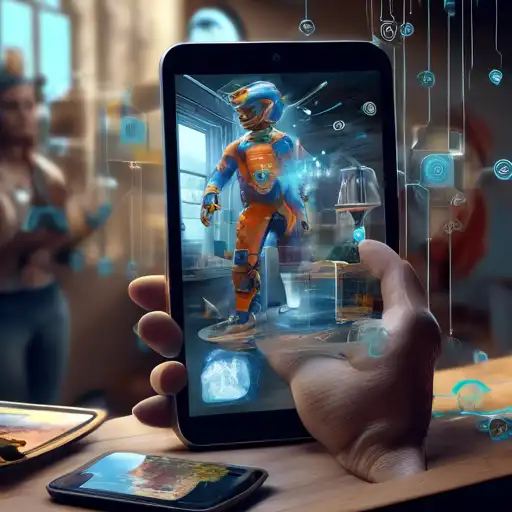Augmented Reality: The Future of Digital and Physical World Integration
Augmented Reality (AR) is rapidly transforming how we interact with the world around us. By overlaying digital information onto the physical environment, AR creates a blended experience that enhances our perception of reality. This technology is not just a futuristic concept but a practical tool that's being integrated into various sectors, including education, healthcare, retail, and entertainment.
Understanding Augmented Reality
At its core, AR is about enhancing the real world with digital details. Unlike Virtual Reality (VR), which creates a completely artificial environment, AR uses the existing environment and overlays new information on top of it. This can be achieved through devices like smartphones, tablets, AR glasses, and headsets.
Applications of Augmented Reality
The applications of AR are vast and varied. Here are some of the most impactful uses:
- Education: AR can make learning more interactive and engaging. For example, students can explore the solar system or human anatomy in 3D right from their classroom.
- Healthcare: Surgeons use AR to visualize complex procedures before performing them, reducing risks and improving outcomes.
- Retail: Customers can try on clothes or see how furniture looks in their home before making a purchase, enhancing the shopping experience.
- Entertainment: From mobile games like Pokémon GO to immersive museum exhibits, AR is creating new ways to entertain and engage audiences.
The Future of AR
As technology advances, the potential for AR is limitless. With the development of more sophisticated AR glasses and the integration of AI, the line between the digital and physical worlds will continue to blur. This will open up new possibilities for interaction, learning, and entertainment that we can only begin to imagine.
For those interested in exploring more about how technology is shaping our future, check out our article on Emerging Tech Trends.
Challenges and Considerations
Despite its potential, AR faces challenges such as privacy concerns, the need for high-quality content, and the requirement for powerful hardware. Addressing these issues is crucial for the widespread adoption of AR technologies.
In conclusion, Augmented Reality is not just a technological innovation; it's a new way of experiencing the world. As we continue to explore its possibilities, AR will undoubtedly play a significant role in shaping the future of digital and physical integration.
